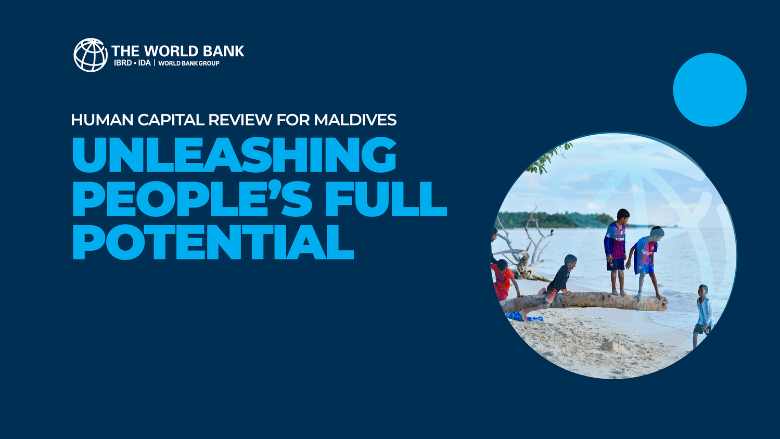DOWNLOAD THE FULL REPORT | DOWNLOAD FACTSHEET
The World Bank’s Human Capital Review (HCR) report for the Maldives supports the Government of the Maldives to measure its first Human Capital Index (HCI) score, a metric that captures the health and education outcomes of a country’s population.
The HCI consists of three components: the likelihood that a child will survive from birth to school age; quantity and quality of education; and child stunting rates and adult survival rates.
Prior to 2021, Maldives lacked internationally comparable data on learning outcomes, a key missing indicator. With the support of the World Bank, Maldives reported the necessary learning outcomes data in 2023, enabling the calculation of its first HCI score.
The report is part of the Human Capital Project (HCP), a global World Bank Group initiative that aims to raise awareness and mobilize action for investing in people as a key driver of economic growth and development.
Main findings:
- A child born in Maldives today will be 59.6 percent as productive as they could be by age 18, if they had complete education and full health.
- This score is above its regional, small island state, and same-income group comparators and can be attributed to its strong performance on most health indicators.
- However, Maldives has important human capital challenges to address, which reveal high levels of inequalities across geography and gender, to fulfil its full potential:
- Quality of education: A Maldivian child can expect to complete 12.4 years of schooling, but only 8.17 years of learning, implying a loss of 4.32 years due to poor quality of education. This loss is higher than the average of upper-middle-income countries (UMICs) and small island states.
- Loss of productivity: At current levels of human capital, Maldives loses 23 percent of its future productivity when they reach the labor market. This is due to low employment rates, especially among women, which reflect the barriers and challenges that women face in the labor market.
- Significant spatial inequalities in human capital outcomes: A child born in Malé, the capital city, can expect to achieve 64 percent of their full potential by age 18, while a child born in the Central Region can expect to achieve only 54 percent. All regions other than Malé have an HCI lower than the national average.
- These challenges are compounded by country-wide structural risks such as climate change which poses a compounding and existential threat. The Maldivian economy is heavily dependent on tourism, making the country highly vulnerable to shocks, with implications for human development progress. Climate change also affects the health and well-being of the population, especially poor and marginalized groups, who have less access to resources and services to cope with the impacts.
Policy recommendations:
- Address geographic disparities in access to education: Improve connectivity and accessibility of remote regions, and ensure equitable allocation and utilization of resources across regions. Expand access to early childhood education and tertiary education, especially for girls and women, and provide more opportunities for lifelong learning and skills development.
- Focus on improving the quality of education for all: Strengthen the curriculum, assessment, and teacher training systems, and ensure education system is relevant and responsive to the needs of the labor market and the society. Promote innovation and technology in education, and fostera culture of learning and excellence among students and teachers.
- Tackle the relatively high levels of stunting: Scale up interventions to prevent and treat child stunting, and improve the delivery and financing of health services. Enhance the health and nutrition status of the population, especially the pregnant and lactating women, and the children under 5. Address social and environmental determinants of health, such as poverty, sanitation, and pollution.
- Promote better employment outcomes for Maldivian women: Remove barriers to female employment, such as legal, cultural, and institutional constraints, and promote gender equality and social inclusion. Support women’s entrepreneurship and skills development, and provide more flexible and conducive work arrangements for women. Enhance the social protection system to cover women and other vulnerable groups, and providing more childcare and elderly care services.
- Increase the efficiency and effectiveness of social sector spending: Improve governance and accountability of social sector institutions, and enhance monitoring and evaluation of human capital programs and policies.
